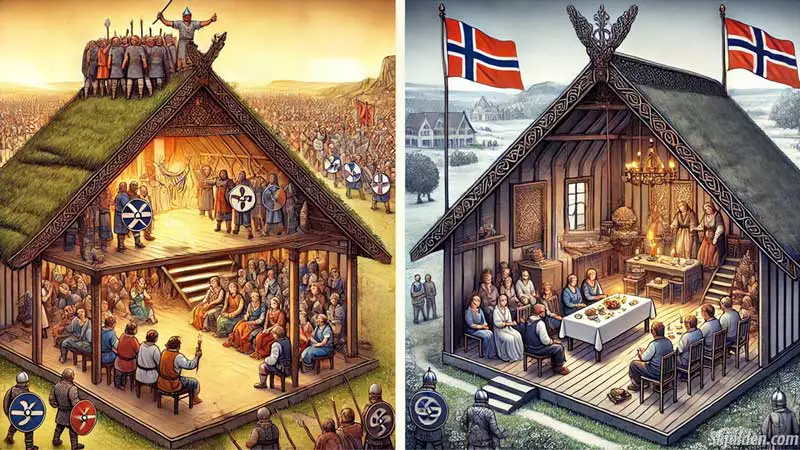When exploring the structure of Nordic Heathen communities, “Kindreds” and “Hearths” emerge as fundamental concepts. These terms encapsulate the ways in which ancient and modern followers of Heathenry organize their social and religious lives. A deep dive into these elements not only sheds light on the communal and familial aspects of Heathen practices but also connects us with the historical roots of these traditions.
Kindreds are essentially extended family groups or clans within the Heathen community. Historically, they have been the backbone of social organization, providing a framework for communal activities, religious ceremonies, and mutual support. The importance of kindreds goes back to ancient times when survival often depended on the strength and unity of such groups.
Hearths, on the other hand, represent the individual family units or households within the kindred. They are the domestic centers where daily religious activities and the practice of traditions take place. The concept of the hearth is deeply symbolic in Heathenry, representing warmth, unity, and spiritual sanctity within the home.
“The term ‘hearth’ traditionally refers to the fireplace, serving as the core of a home for cooking and warmth. Symbolically, it extends to represent the household itself, embodying a sacred space where families gather for daily rituals and spiritual practices. This dual meaning highlights the hearth’s role as both a physical and spiritual center in the home.”
These structures have historical roots that trace back to notable figures in Norse history, who shaped their social and religious landscapes around these units. The roles and significance of kindreds and hearths have evolved, yet they remain central to the identity and operation of Heathen communities today.
Historical Significance and Modern Relevance
Diving deeper into history, kindreds and hearths have been recorded in the sagas and tales of Norse gods and heroes, where they often form the setting for epic narratives.
For instance, legendary figures like Harald Fairhair, who is credited as the founder of the first Norwegian kingdom, organized his realm around the concept of kindreds. This structure not only facilitated the management of his territory but also ensured loyalty and the orderly transfer of traditions and power.
The hearth played a similarly critical role in these historical narratives, often depicted as a sacred space where leaders and common folk alike would gather to worship and make important decisions. The hearth was more than just a physical space—it was a symbolic center of Norse spiritual and cultural life.
In modern times, these historical concepts have been revived and adapted by contemporary Heathen communities across the globe. Kindreds provide a sense of belonging and a connection to traditional values, while hearths nurture individual and family spirituality.
Together, they form a robust framework supporting the revival of Norse religious practices, maintaining continuity with the past while adapting to the needs of today’s practitioners.
This blend of historical tradition and modern practice makes the study of kindreds and hearths not only fascinating but also essential for anyone interested in the cultural heritage and religious practices of the Nordic people. Their enduring presence underscores the timeless relevance of these social structures in building community and fostering spiritual growth.
